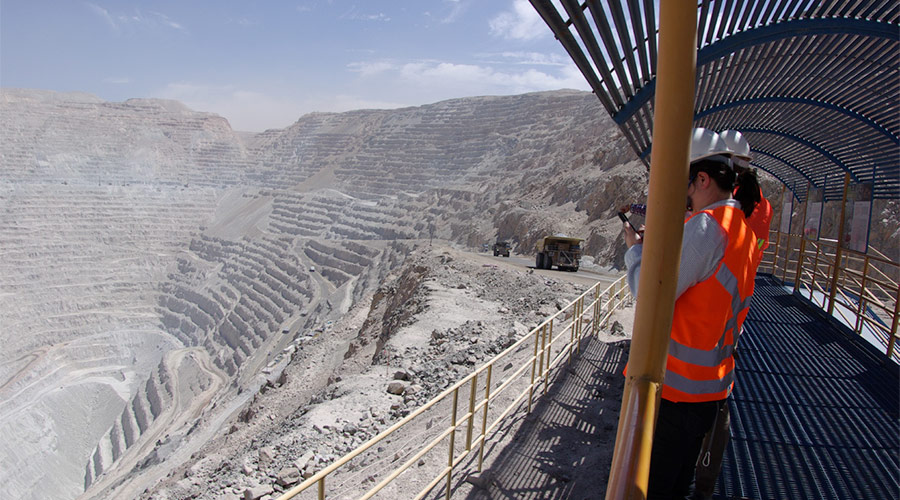The Mining Research Laboratories focus on extraction technologies that are safe, economic, and energy efficient. Research at the laboratories (see Figure 1) includes rock mechanics, blasting, mine planning, reliability and maintenance of mobile mining equipment, pyrometallurgy, mineral processing, extraction of critical minerals from primary and secondary sources as well as the social, economic and legal aspects of mining and its sustainability.
Research in critical minerals conducted by several faculty members aims at the development of cleaner and more efficient production methods in mineral processing, hydrometallurgy and pyrometallurgy by integrating a series of innovative strategies, including microwaving as an alternate form of energy and machine learning. Researchers also focus on the mine-to-mill and process-to-environment interfaces with recycling opportunities at all levels, such as the recovery of minerals from recycled EV batteries.
The most current theme of research in rock mechanics is stress fields in complex rock masses. Stresses are a fundamental part of stability analysis in mine design, but little effort has been put into understanding stresses in mines compared to methods of estimating rock mass strength. Most mines are located in regions of geological complexity and there is much anecdotal and direct evidence that this is why deposits are found in these areas, including seismicity, which indicates that stress fields in such environments are far from simple, even before mining takes place.
The rock mechanics/mine design group is developing a variety of tools and techniques to learn about the characteristics of stress fields at a variety of scales (crustal to mine) and in deep and high stress settings. The objective is to better understand rock mass behaviour, to model surface and underground excavations, and to improve the geomechanical mine design process. The blasting group examines ways of reducing energy consumption in breakage and milling using innovative blast designs. The work begins with the fundamental understanding of the performance of energetic materials, the energy delivery during blasting, the propagation of stress waves in the rock mass, and the resulting micro and macro fracture and fragment formation. These efforts are supported by experimental studies conducted in a remote 400-acre laboratory facility.
The Mine Planning group investigates new approaches for optimal mine design and fleet management while considering mine safety. More specifically, the group explores new efficient short-term and long-term surface and underground mine planning techniques. This computational lab develops and adapts optimization methods from computer science and operations research such as machine learning and mathematical programming to solve problems in mine optimization and mine automation.
Apart from hydrometallurgy, mineral processing laboratories conduct research on kinetics, thermodynamics of reagent interactions in simulated process environment, surface phenomena in mineral processing, reactivity and stability of sulphide minerals in tailing environments, recycling, dewatering and waste utilization, recovery of fine particles, concentrator circuit analysis, and the design and flotation of complex sulphides and associated selectivity problems. Other recent research is focused on process development for minerals used in energy storage, oxide mineral flotation, and the use of machine learning in mineral processing and metallurgy.
The current research focus for those studying pyrometallurgy at the laboratories is the application of new energy sources for the recovery and recycling of metals, as well in the comminution stages in the mill. In particular, the group is interested in the use of plasmas and microwaves in extractive metallurgy. Microwaves are a relatively new energy source with considerable potential, and fundamental research is being performed on the interactions of microwaves with minerals. On the applied side, this technology is being studied for drying, heating, and smelting applications.
Last but not least, the Green Mining Value Chain lab investigates mining sustainability, the circular economy, resource efficiency and urban mining. Other research in energy efficient mining includes artificial ground freezing with renewable energy, energy-efficient ventilation, heating and cooling and the use of hydrogen in Mining.
The Mining Research Laboratories group includes two fellows of the Canadian Institute of Mining, Metallurgy and Petroleum (CIM), a fellow of the Canadian Academy of Engineering (CAE), the associate editor of Canadian Metallurgical Quarterly, a former editor of the Journal of Blasting and Fragmentation, the Chair in Mine Design, and the NorandaFalconbridge Chair in Mine-Mechanical Engineering.
